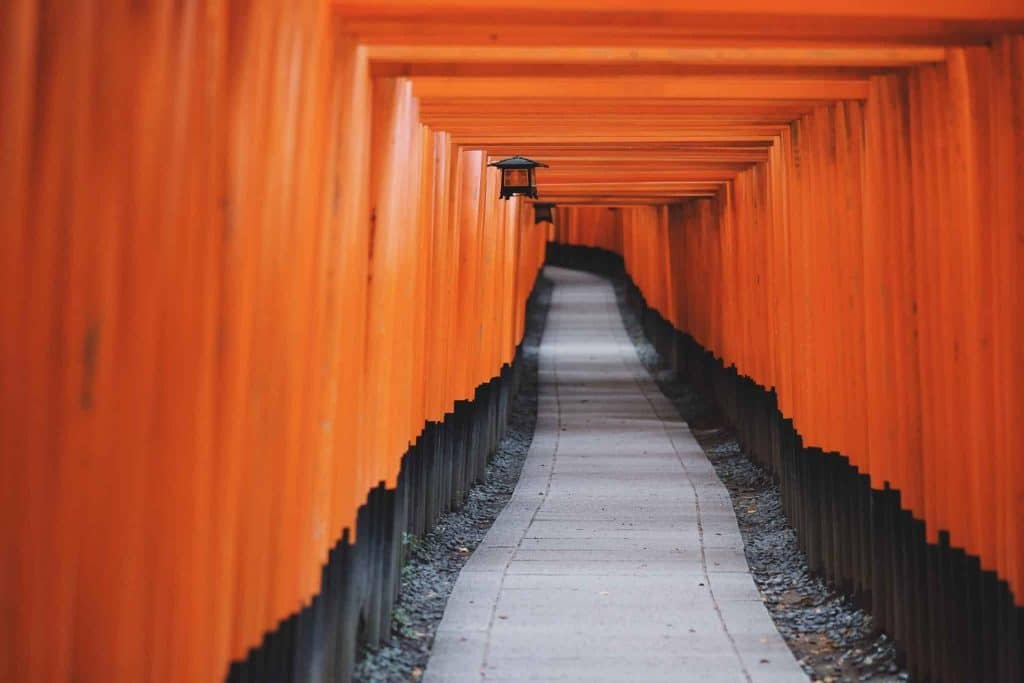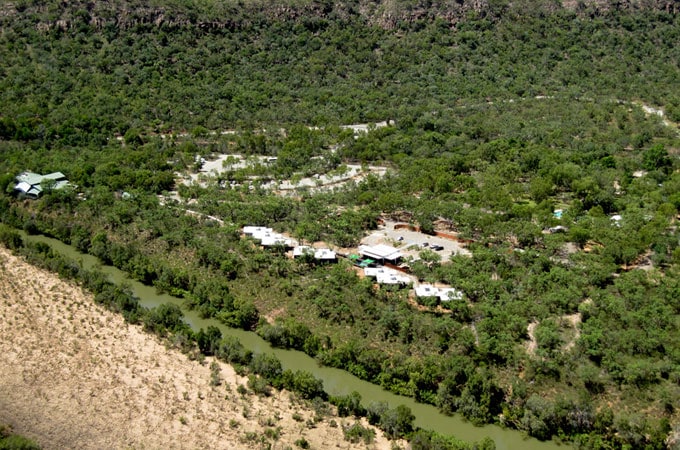Matt Brace sidesteps the tourist path for a romantic stroll around some of Kyoto’s most peaceful and poetic shrines and temples. Follow in his footsteps and create your own romantic tour through the temples of Kyoto.
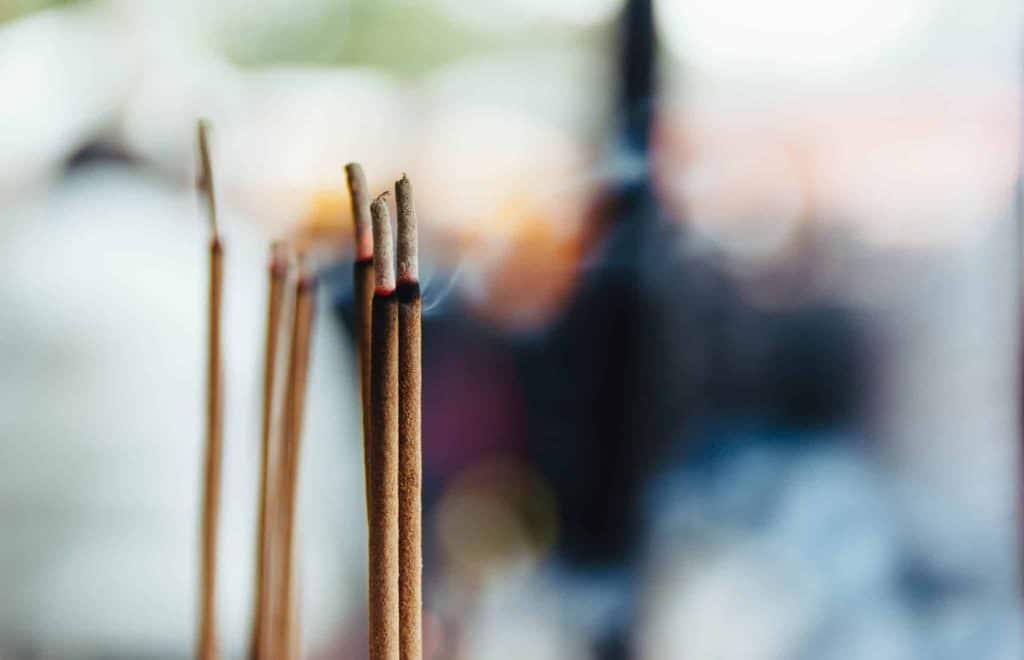
There are roughly 1,600 temples in the ancient Japanese city of Kyoto. Some are social media favourites, grand, global icons so crowded that visitors are herded through them like cattle. Others are oases of tranquillity tucked away in quiet neighbourhoods, rarely open, known only by the locals and little bigger than a downtown Tokyo apartment. Before setting out on Day One we asked the concierge at the charming Hyatt Regency Kyoto to recommend some quieter, perhaps more romantic temples. She suggested a couple on the Philosopher’s Path in the foothills of Mt Zenki in the north-east of the city.
Geisha Town
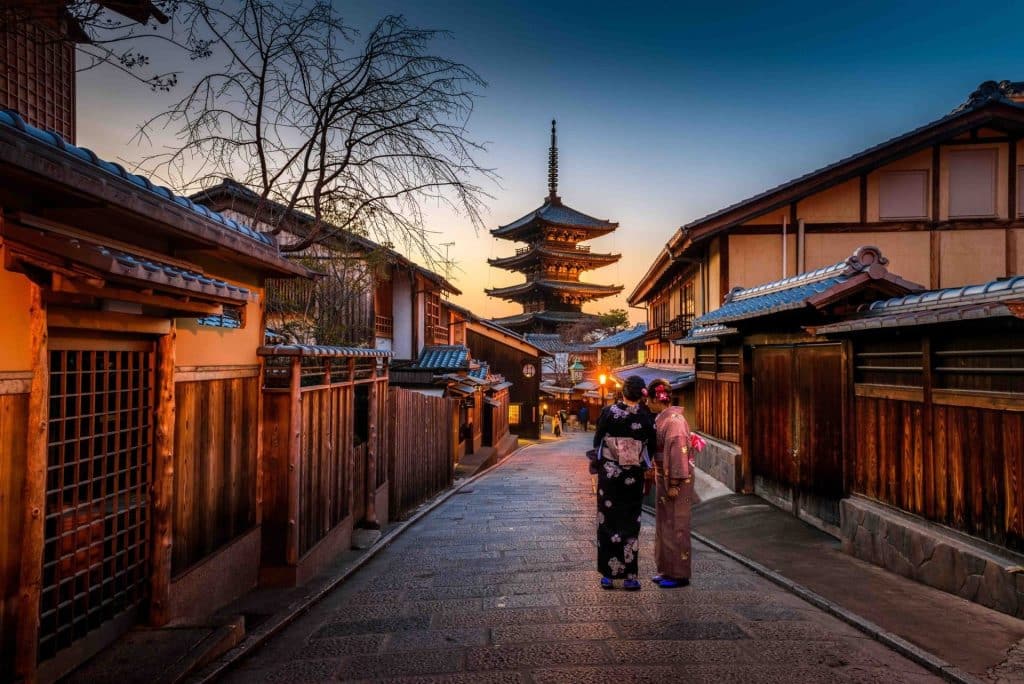
First stop on our walk to the Philosopher’s Path was the geisha district of Gion where we found the small wooden Tatsumi-jinja shrine on the corner of Shirakawa Lane and Shinbashi-dori. Although it’s barely big enough to house 10 worshippers at once, you can’t miss it because it is skirted by a bright orange fence. This is where apprentice geisha make their first public appearances.
The shrine is next to the clean and free-flowing Shirakawa Canal, which we followed north east through Gion, stopping to drink coffee and watch the water birds from its banks. We soon found ourselves opposite an even smaller shrine than Tatsumi-jinja, a little neighbourhood one with three small orange torii or gates.
That corner of Kyoto was so quiet and peaceful, away from the busy main streets. Everything seemed dialled down a few notches. Near the canal-bank shrine we checked out a small restaurant to see if it might be a potential dinner venue. A sign in the window, in English, read: “We can serve only one pair a day during the dinner time as we are old couple having limited work force.” They were probably booked solid for weeks, bless them.
Just north of there the peace was broken by a main road and hordes of tourists heading for the huge Heian Shrine. Before you reach the shrine, you pass under a massive torii; at 24 metres, it’s one of the tallest in Japan. The shrine itself had a long queue of people snaking across the main courtyard so we gave it a miss and headed east along Reisen Dori to the start of the Philosopher’s Path.
Peaceful Temple Trio
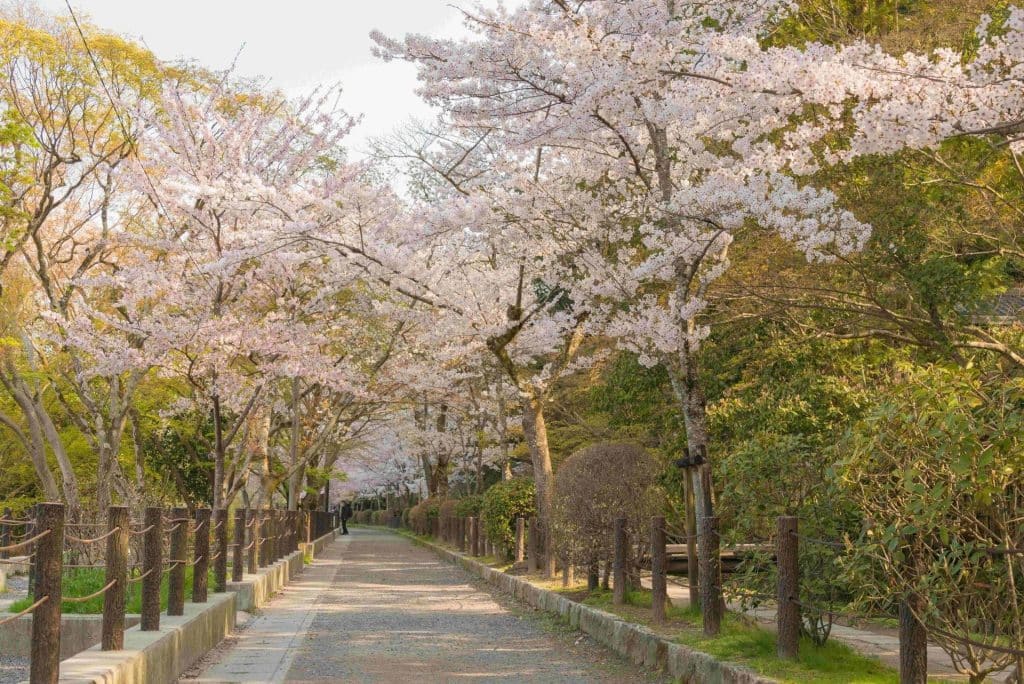
The path is lined with hundreds of cherry blossoms which create a pink blizzard in spring. In winter, when we visited, the trees were bare, their skeletal branches silhouetted against the blue sky, but it was still romantic and we had the place almost to ourselves.
It is apparently named after Nishida Kitaro, a famous Japanese philosopher who was said to meditate there. We totally understood his reasoning because it was one of the most peaceful and restorative walks we have done anywhere.
The first of the concierge’s recommendations was the Otoyo Shrine, noted for its stone animals which include birds, lions, cat-fox chimeras and alarmingly lifelike snakes. Guarding the shrine itself are two jolly fat mice.
About 300 metres further along the Philosopher’s Path was the concierge’s second tip: the Anraku-ji temple, built between 1532 and 1555 as a memorial to two young priests. The temple is famous for its annual Shishigatani Pumpkin Service every July 25 when visitors flock there to eat boiled pumpkin.
The temple is usually closed in winter but we got lucky when a female cleaning team showed up. They had no English and we had only ‘hello’ and ‘thank you’ in Japanese but after lots of sign language, bowing and smiling they let us through the thatched entrance gate and gave us a few minutes inside the grounds to take photos of the winter sunlight flickering through the branches of hibernating maples.
Related: Where to eat in Kyoto – the best restaurants, from ramen to date night!
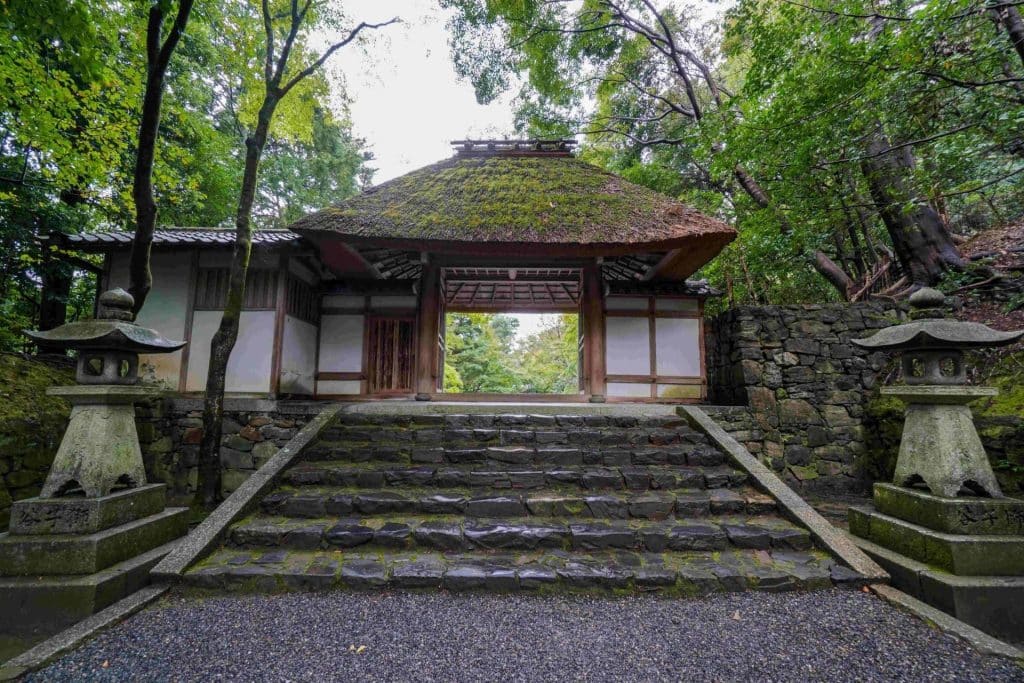
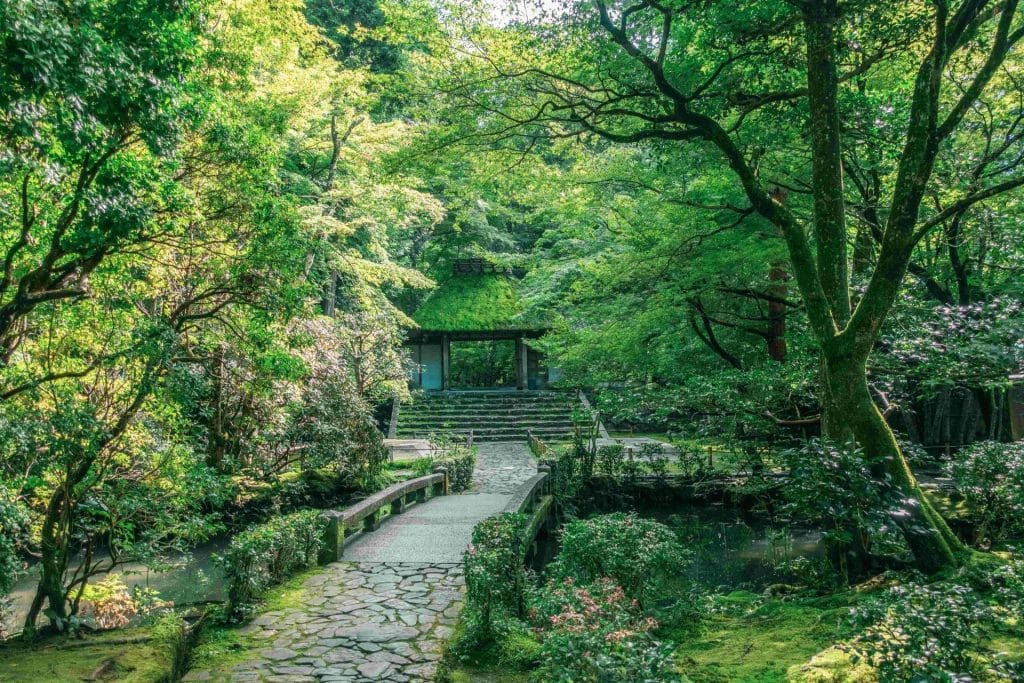
To complete our temple trio on the Philosopher’s Path we climbed the broad stone stairway to the Honen-in temple, which is named after a Buddhist saint and dates back to 1680. We passed blue stones with Japanese kanji etched into them and walked through a gateway to find ourselves alone in a sanctuary. Vein-like root systems lay across the surface of the garden beds and a stone font was adorned with yellow and white chrysanthemums. Other areas were carpeted with green moss punctuated by stepping stones. It all seemed so random but in Japanese gardens, we had learned, even things that look discarded are there for a reason.
With aching feet and joyful souls we trudged back to the Hyatt Regency where the Riraku Spa team realigned our meridian energies and we slept deeply and dreamed of soft moss and other calm things.
Related: Why Kyoto is a Lover’s Paradise
More Temples Not To Miss
We took it easy on Day Two, visiting three crackers.
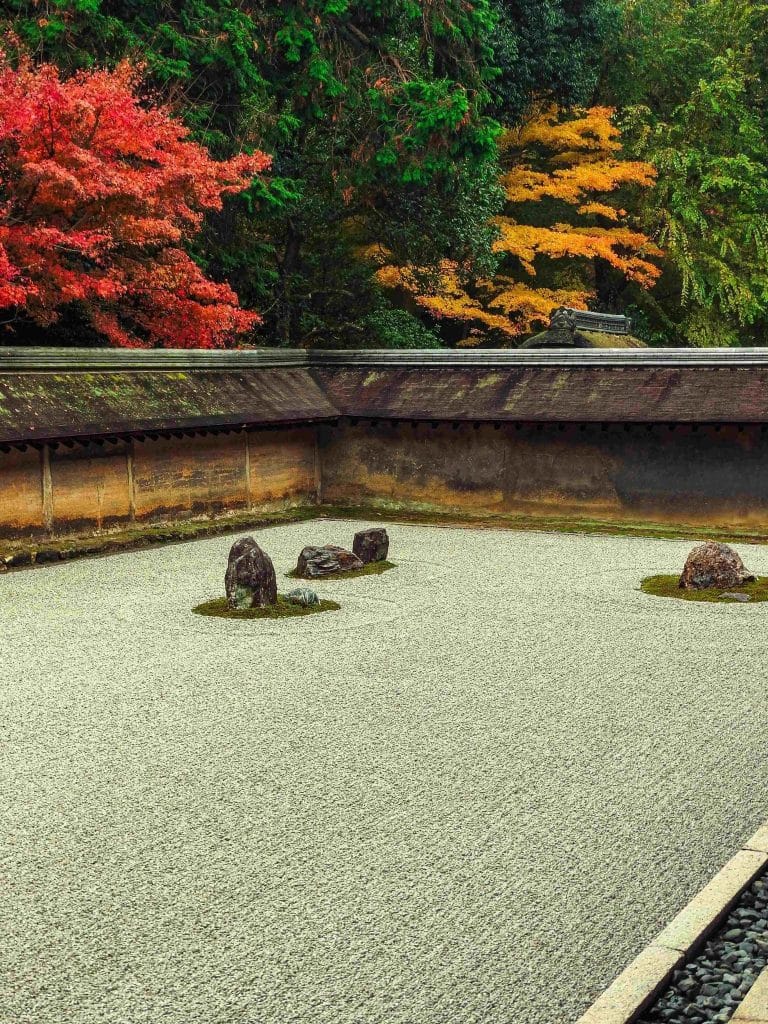
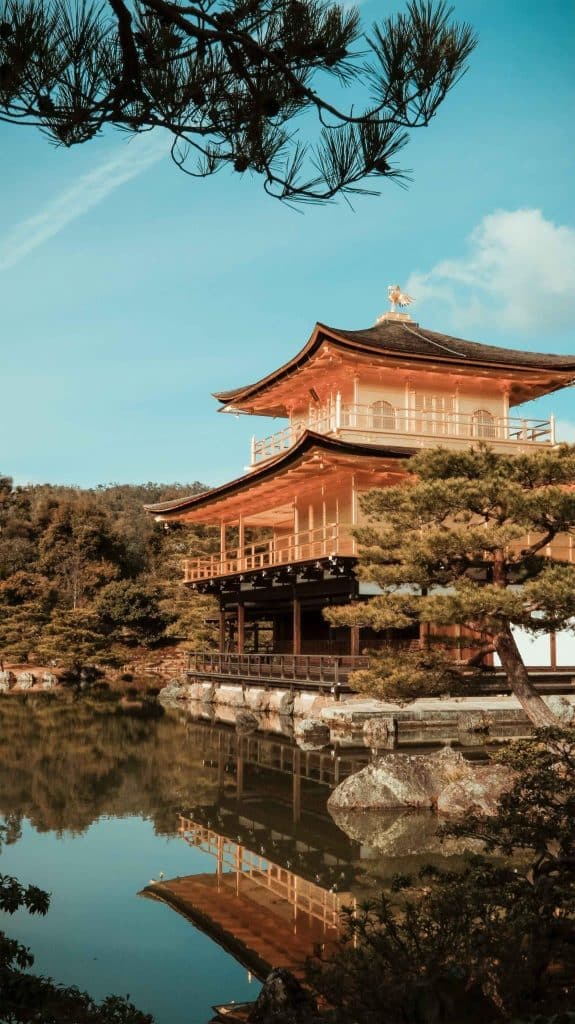
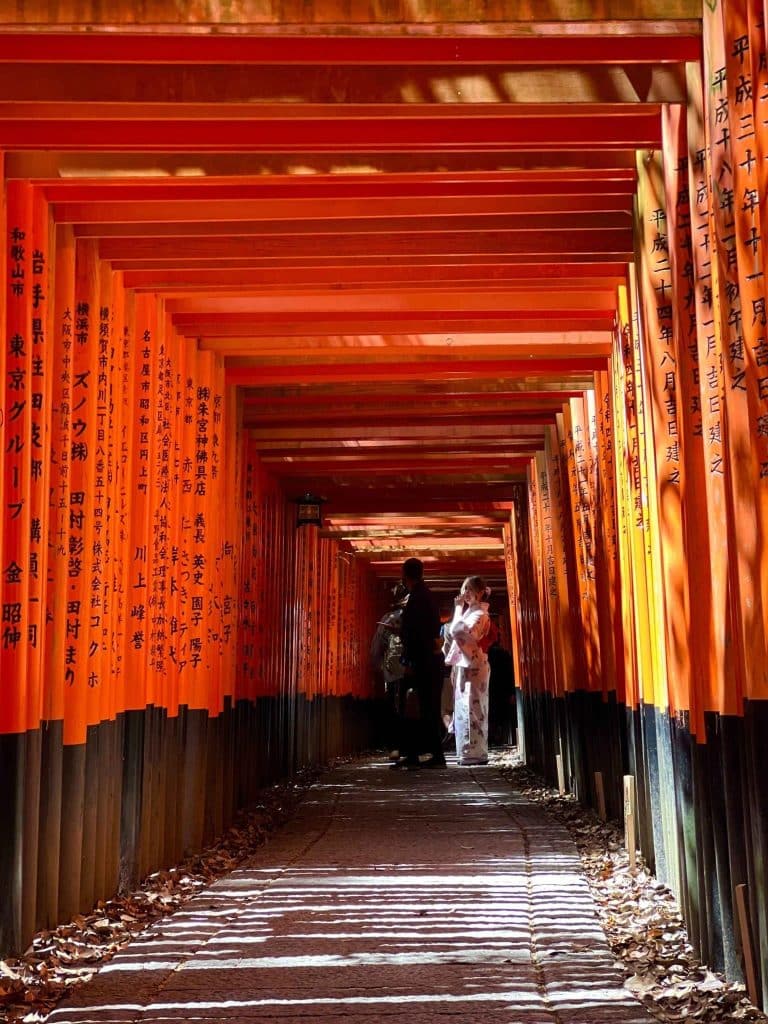
Ryoan-ji: At Satsueisho-mae station catch a super-cute, purple, one-carriage ‘toy’ train on the Randen line, alight at Ryoan-ji station and walk north to the temple. Ryoan-ji is famous for its Zen garden with island stones floating peacefully among a sea of perfectly raked gravel.
Kinkaku-ji: Ryoan-ji’s neighbour is one of those stunning, iconic temples. Pay a handful of change to ring a giant bell for peace and good luck, then stroll to the lake where your hearts will skip a beat. Across the water sits the Golden Temple. About two hours before sunset, the rays ignite the gold-painted walls and balconies. It’s breathtaking.
Fushimi Inari: Possibly the most Instagrammed temple of them all. Ranging across a hillside are approximately 10,000 orange torii, many of which are packed so close together they create colourful tunnels running up and down the slopes. Halfway up the hillside is a small shrine where you can ‘smoke’ yourselves in clouds of incense from great, fat sticks that fume away like chimneys.
Read more: A Temple Stay in the 1200-year-old mountaintop sanctuary of Kōyasan (Mount Koya), Japan.
